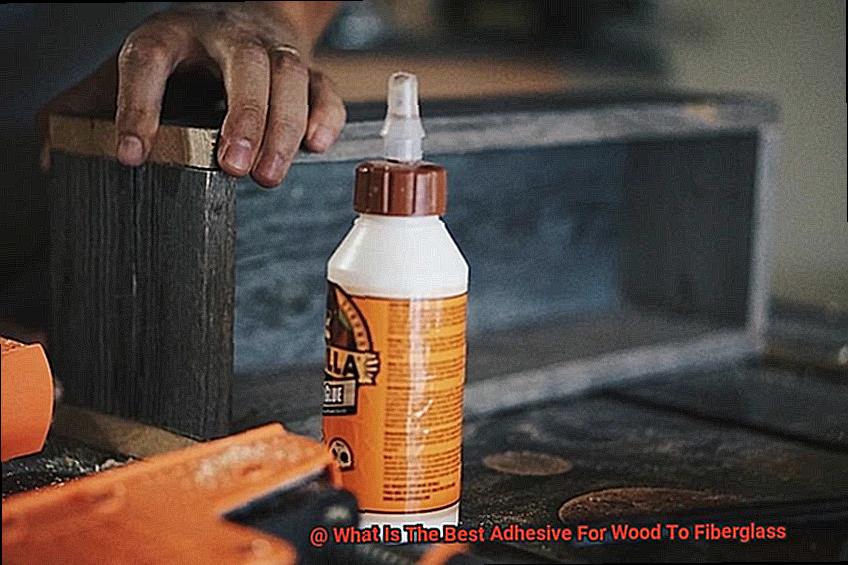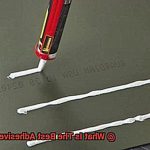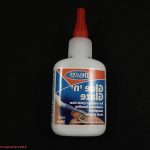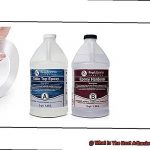Are you a DIY enthusiast or hobbyist on the hunt for the ultimate adhesive to unite two seemingly incompatible materials? Ever wondered, “What’s the best adhesive for wood to fiberglass?” Well, fret no more because we’ve got all the answers you need.
Imagine yourself basking in the warm glow of a sunny Saturday afternoon, crafting a masterpiece that showcases your creativity—a stunning wooden structure destined to be the envy of your backyard. But there’s one hitch—you need to attach a fiberglass element to your elegant creation. How do you create a bond that’s sturdy, seamless, and built to last?
The challenge of joining wood and fiberglass can be quite daunting for any craftsman or craftswoman. Both materials possess unique properties that demand an adhesive capable of standing the test of time. Luckily, we’re here to equip you with the knowledge and wisdom necessary to make an informed choice.
In this captivating blog post, we’ll embark on an exploration of various adhesives commonly used for wood to fiberglass applications. Through meticulous analysis, we’ll unveil the pros and cons of each adhesive, ultimately revealing the elusive champion.
Join us as we navigate through the realm of adhesives, delving into their chemical compositions, strength, flexibility, and resistance against moisture, temperature fluctuations, and environmental factors. You’ll discover the wonders of epoxy adhesives and polyurethane adhesives—each with their own unique capabilities and compatibility with wood and fiberglass.
So if you’re ready to dive headfirst into the world of adhesives, buckle up for this enlightening journey. We promise that armed with this information, you’ll be able to create breathtaking wood and fiberglass projects that will leave both you and your friends in awe. Get ready as we unlock the secret behind a bond that stands strong.
What Factors to Consider When Choosing an Adhesive for Wood-to-Fiberglass Bonding?
Contents
- 1 What Factors to Consider When Choosing an Adhesive for Wood-to-Fiberglass Bonding?
- 2 Epoxy Adhesives: Pros and Cons
- 3 Polyurethane Adhesives: Pros and Cons
- 4 Marine-Grade Adhesives: Pros and Cons
- 5 Surface Preparation and Application Method
- 6 Curing Time for Different Adhesives
- 7 Cost Comparison of Different Adhesives
- 8 Tips for Successful Bonding of Wood to Fiberglass
- 9 Conclusion
Achieving a strong and durable bond between wood and fiberglass relies on selecting the right adhesive. In this article, we will explore the crucial factors to consider when choosing an adhesive for wood-to-fiberglass bonding. By understanding these factors, you can ensure the success of your project and create a bond that stands the test of time.
Compatibility:
To start, consider the adhesive’s compatibility with both wood and fiberglass surfaces. It should be specifically formulated to bond effectively without causing any damage or degradation. Checking the manufacturer’s instructions or consulting adhesive experts will help ensure compatibility.
Strength:
A paramount factor is the adhesive’s strength in holding the wood and fiberglass together. The required strength depends on the application and load-bearing capacity needed. Choose an adhesive that offers sufficient strength to withstand expected stresses and forces.
Flexibility:
Wood and fiberglass have different coefficients of expansion and contraction, meaning they react differently to temperature changes. To accommodate these movements without weakening or breaking the bond over time, select an adhesive with some degree of flexibility. This ensures long-term durability.
Water Resistance:
For bonds likely to be exposed to moisture or water, opt for an adhesive with excellent water resistance properties. This prevents the bond from weakening or breaking down in wet conditions, ensuring durability in outdoor or marine applications.
Cure Time:
Consider the adhesive’s cure time, indicating how long it takes to fully harden and reach maximum strength. Depending on your project’s needs, you may desire a fast or slow cure time. Take this factor into account, particularly if there are time constraints or immediate strength is required.
Application Method:
Ease of application is another crucial consideration when choosing an adhesive. Some adhesives require mixing before use, while others come pre-mixed and ready for application. Ensure that your chosen adhesive’s application method aligns with your specific bonding process, eliminating any difficulties or challenges.
Safety:
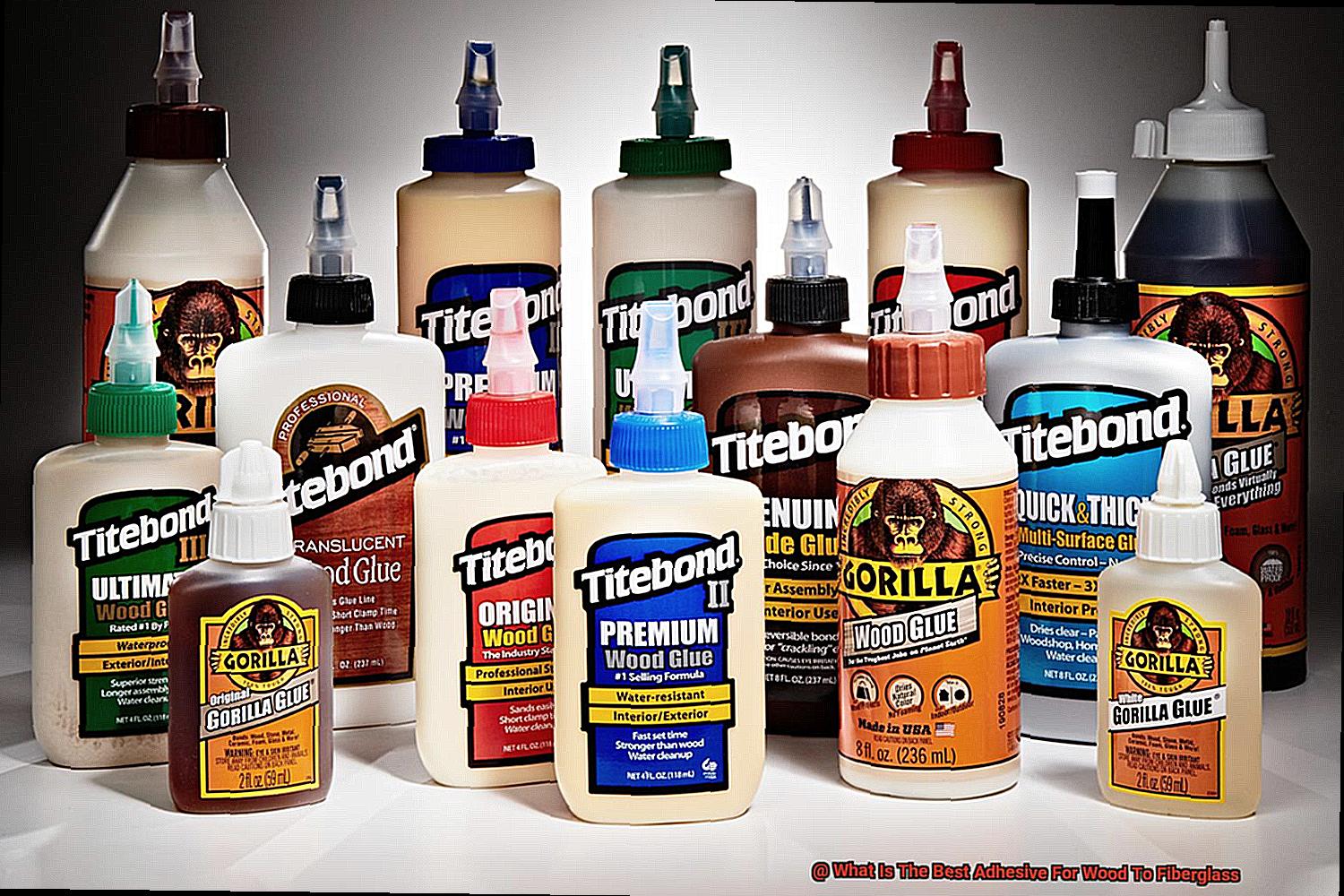
Prioritize safety when working with adhesives, especially those containing hazardous chemicals or substances. Always use adhesives in well-ventilated areas and wear appropriate personal protective equipment as necessary.
Epoxy Adhesives: Pros and Cons
When it comes to creating a steadfast connection between wood and fiberglass, nothing compares to the versatility and reliability of epoxy adhesives. In this article, we will delve into the world of epoxy adhesives, exploring their pros and cons for bonding these two materials together. By understanding the unique advantages and potential drawbacks, you’ll be equipped with the knowledge to make informed decisions for your projects. So, let’s embark on a journey through the realm of epoxy adhesives.
Pros:
Unyielding Strength:
Epoxy adhesives stand tall as one of the strongest bonding options available. With their exceptional ability to withstand heavy loads and vibrations, they offer a bond that ensures structural integrity. Whether you’re constructing marine vessels or composite structures, epoxy adhesives provide unmatched strength.
Impervious to Moisture:
Water is no match for epoxy adhesives. Their remarkable resistance to moisture makes them an excellent choice for outdoor or marine applications where exposure to water is a constant concern. Even in the face of challenging environments, your wood-to-fiberglass bond will remain steadfast and reliable.
Masterful Gap-Filling:
No gap is too wide for epoxy adhesives to bridge. These remarkable adhesives possess impressive gap-filling properties, effortlessly sealing irregularities between wood and fiberglass surfaces. Rest assured that your bond will be tight, secure, and free from weak spots.
Extended Working Time:
Epoxy adhesives grant you the luxury of time. Their long working time allows for precise application, positioning, and adjustments before curing takes place. This invaluable feature proves particularly useful when bonding intricate or expansive wooden structures to fiberglass surfaces.
Cons:
Premium Performance Comes at a Price:
Epoxy adhesives’ superior performance and quality do come with a higher cost compared to other adhesive options. However, when it comes to the strength and durability of your wood-to-fiberglass bond, investing in epoxy adhesives is a wise choice, ensuring long-lasting results.
Polyurethane Adhesives: Pros and Cons
When it comes to bonding wood to fiberglass, polyurethane adhesives reign supreme. These versatile adhesives offer a myriad of benefits, including exceptional strength, gap-filling capabilities, water resistance, and flexibility. However, like any other adhesive, they also come with a few drawbacks that should be considered. Join us as we delve into the pros and cons of using polyurethane adhesives for your next project.
Pros:
- Unyielding Bond Strength: Polyurethane adhesives create an unwavering connection between wood and fiberglass, ensuring a secure and long-lasting bond. Even in the face of stress or movement, you can trust that this adhesive will hold firm.
- Gap-Filling Marvels: Imperfect surfaces? No problem. Polyurethane adhesives possess the remarkable ability to fill gaps and smooth out irregularities. Say goodbye to worries about misaligned or rough surfaces; this adhesive bridges the gap and delivers a robust bond.
- Defying Water’s Wrath: Wood and fiberglass often face water or humid conditions that can weaken traditional adhesives. Enter polyurethane adhesives with their impressive resistance to water and moisture. Rest assured that your bond won’t deteriorate over time, even in wet environments.
- Flexibility that Moves with You: The inherent flexibility of polyurethane adhesives allows them to gracefully accommodate slight movements and vibrations between wood and fiberglass. This adaptability prevents cracks or breaks in the bond, making it ideal for applications where materials experience frequent motion.
Cons:
- Time Takes Its Toll: Patience is a virtue when working with polyurethane adhesives. Unlike their quick-bonding counterparts, these adhesives require several hours or even days to fully cure and reach their maximum strength. If you’re working on a tight deadline, this extended curing time may present a challenge.
- Expansion Surprises: While polyurethane adhesives excel at filling gaps, they have a propensity to expand during the curing process. This expansion can lead to excess adhesive seeping out from the bonded area, leaving behind messy residues that demand cleanup. Precise application and adhesive control are essential to avoid unwanted expansion.
Marine-Grade Adhesives: Pros and Cons
Today, we’re setting sail into the world of marine-grade adhesives and exploring the incredible benefits they offer, as well as a few drawbacks to keep in mind. So strap on your life jacket and let’s dive in.
Let’s start with the pros because who doesn’t love some good news? First up, we have the superior resistance to water that marine-grade adhesives bring to the table. These adhesives are like fearless warriors, specially formulated to withstand constant exposure to moisture and saltwater. Unlike regular adhesives, they won’t deteriorate or weaken over time, making them the perfect choice for boats and other marine vessels.
- But that’s not all – marine-grade adhesives also boast exceptional bonding strength. They create an unbreakable bond between wood and fiberglass, ensuring that these materials stay securely attached even in the face of turbulent waves, impacts, or extreme temperature changes. When it comes to marine applications, where strength and durability are paramount, these adhesives are an absolute game-changer.
- Now let’s talk about their secret weapon – UV resistance. Regular adhesives can be like fragile flowers when exposed to sunlight, becoming brittle and weak over time. But marine-grade adhesives are armed with UV stabilizers that keep them strong and flexible even under the blazing sun. So if you’re working on an outdoor project where your adhesive will be basking in sunlight all day long, these adhesives are your best mate.
However, it’s important to consider the cons before you set sail with marine-grade adhesives. One of the main drawbacks is their higher cost compared to regular options. Yes, they may make a dent in your wallet, but when you think about the demands of marine applications, the investment in a high-quality adhesive is well worth it in terms of longevity and performance.
Another potential drawback is the longer curing time of marine-grade adhesives. Patience is key here, my friends. These adhesives require more time to fully cure and reach their maximum strength compared to standard options. So if you’re on a tight schedule or have time constraints for your project, you may need to plan accordingly.
Surface Preparation and Application Method
When it comes to bonding wood to fiberglass, surface preparation and application method are crucial for achieving a strong and durable bond. Let’s dive into the necessary steps and techniques to ensure optimal adhesion and a successful bond.
Surface Preparation:
- Cleanliness is key: Before applying any adhesive, it’s essential to thoroughly clean the wood and fiberglass surfaces. Remove dirt, dust, grease, or any other contaminants that could hinder adhesion. A mild detergent or solvent compatible with both materials will do the trick. Give them a good scrub and rinse them clean.
- Roughen up for better grip: To improve the adhesive’s grip, gently sand both surfaces using sandpaper or a sanding block. This creates a slightly rough texture that enhances adhesion. Sand evenly and cover the entire bonding area for optimal results.
- Dust away the debris: After sanding, wipe away any dust or debris using a clean cloth or tack cloth. A clean surface is crucial for the adhesive to adhere well.
Application Method:
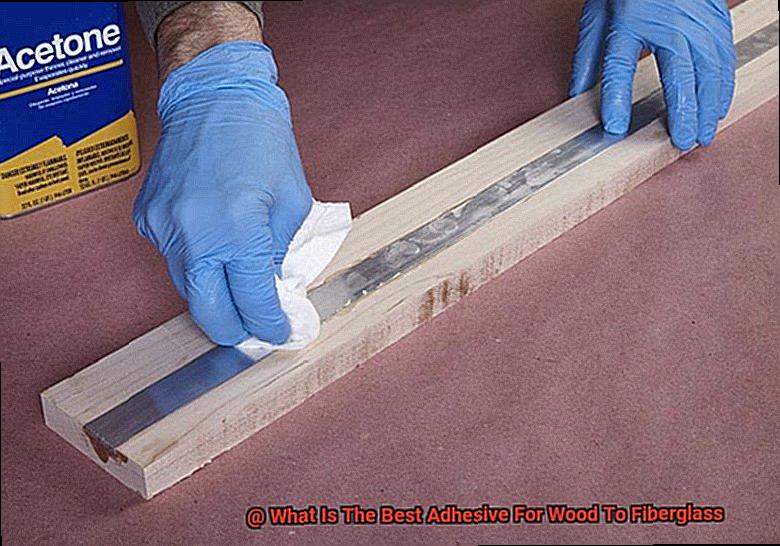
- Apply with precision: The application method varies depending on the type of adhesive used. One common approach is to apply the adhesive in a thin, even layer using a brush or roller. Ensure that the adhesive covers the entire surface area for maximum bond strength.
- Align for success: Once the adhesive is applied, carefully align the wood and fiberglass surfaces together. Take your time to ensure accurate positioning and a snug fit between the two materials. This step is critical for achieving a strong bond.
- Apply even pressure: To ensure proper contact and adhesion, apply even pressure across the entire bond line. Use your hands or a tool to distribute pressure evenly, helping the adhesive spread and create a solid bond.
- Clamping for consistency: Depending on the adhesive used, clamping or weighting down the bonded materials may be necessary to maintain consistent pressure during curing. Follow the manufacturer’s instructions for specific guidelines on clamping.
Additional Tips:

- Test before you bond: Conduct a small test bond before applying adhesive on a large scale. This allows you to assess its performance and suitability for your specific wood and fiberglass combination.
- Follow the manufacturer’s instructions: Always read and follow the instructions provided by the adhesive manufacturer. They will provide guidance on surface preparation, application methods, curing time, and other relevant information.
Curing Time for Different Adhesives
Imagine the thrill of your project coming together seamlessly as wood and fiberglass unite. But here’s the secret ingredient: understanding the magic of curing time for different adhesives. In this captivating article, we’ll delve into the world of adhesives, uncovering their unique curing times. Brace yourself for an enlightening journey that will empower you to choose the perfect adhesive and transform your bonding endeavors into a masterpiece.
The Sprinters: Rapid Curing Adhesives

- Meet cyanoacrylate adhesives, the superheroes also known as super glue. While they may not boast Herculean strength, they compensate with their lightning-fast curing time.
- Within mere seconds under normal conditions, super glue conjures an unbreakable bond between wood and fiberglass.
- Ideal for projects where time is of the essence and maximum strength takes a backseat.
The Equilibrium Seekers: Polyurethane Adhesives
- If you crave a swifter cure without compromising too heavily on strength, look no further than polyurethane adhesives.
- These marvels strike a perfect balance between speed and sturdiness, with curing times ranging from 30 minutes to a few hours.
- Caution: While they offer respectable bond strength, extreme durability may not be their forte.
The Virtues of Patience: Epoxy Resin
- For seekers of unparalleled strength and endurance, epoxy resin emerges as a worthy contender despite its longer curing time.
- Boasting a typical curing time spanning from a few hours to several days, epoxy resin engineers bonds that withstand the harshest conditions.
- Remember to heed the manufacturer’s instructions for optimal curing time and conditions to unlock its full potential.
Cost Comparison of Different Adhesives
Embarking on a wood to fiberglass bonding project requires careful consideration of various factors, and cost is undeniably one of them. In this captivating exploration, we will unravel the economics of adhesives, delving into the cost comparison of different options for wood to fiberglass applications. Brace yourself for an enlightening journey through the realm of adhesive economics.
Epoxy Resin: The Premium Choice
Enter epoxy resin, the hero of adhesives, renowned for its unmatched bonding properties and durability. However, this superhero comes with a higher price tag. Epoxy resins are generally more expensive due to factors such as brand reputation, quantity, and quality.
If you prioritize top-notch performance and are willing to invest a little extra, epoxy resin stands tall as the premium choice.
Polyurethane Glue: The Versatile Middle Ground
When affordability meets versatility, polyurethane glue steals the spotlight. These adhesives possess the remarkable ability to bond various materials, including wood and fiberglass. In terms of cost, polyurethane glues offer a more budget-friendly option compared to epoxy resins. With a plethora of brands and quantities available, finding a polyurethane glue that aligns with both your project requirements and your wallet is a breeze.
Cyanoacrylate Adhesives: Fast Bonding on a Budget
For those seeking the perfect blend of speed and savings, cyanoacrylate adhesives, or super glues, emerge as the ultimate solution. With lightning-fast bonding capabilities and effortless application, super glues are often the go-to choice for quick fixes. In terms of cost, they present a more budget-friendly alternative compared to epoxy resins and polyurethane glues. So, whether you’re working on a smaller project or aiming to keep costs down, super glue proves to be the adhesive sidekick you’ve been searching for.
Calculating the True Cost:
When comparing adhesive costs, it’s crucial to account for the coverage area. Certain adhesives may necessitate a larger quantity to cover the same surface area compared to others. To obtain an accurate cost comparison, it is imperative to calculate the cost per unit area. This approach ensures that you obtain the best value for your money while satisfactorily meeting your project requirements.
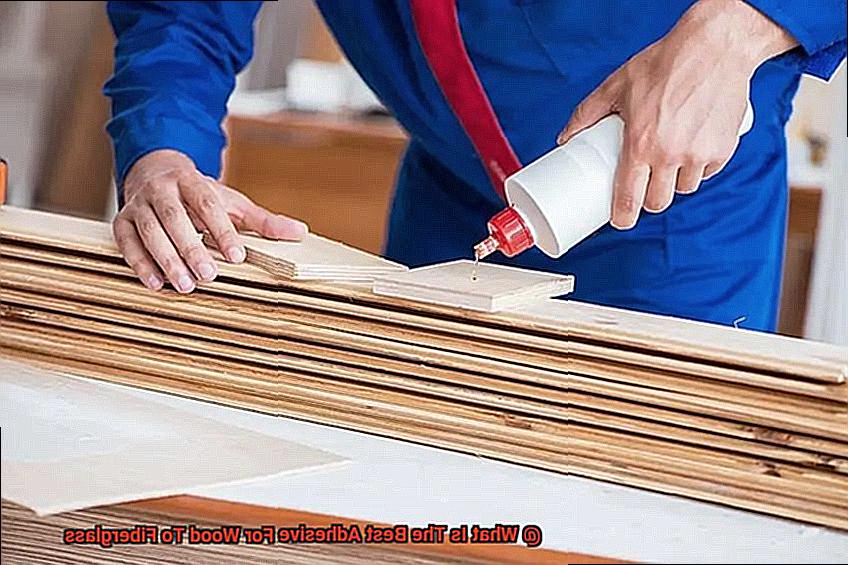
Tips for Successful Bonding of Wood to Fiberglass
In the realm of bonding wood to fiberglass, the ability to create a bond that is both strong and long-lasting is paramount. Whether you’re embarking on a boat-building adventure or undertaking a creative DIY project, these expert tips will guide you towards achieving a connection that can weather any storm.
The Power of Preparation:
Before diving into the bonding process, it is imperative to invest time in preparing both the wood and fiberglass surfaces. By meticulously cleaning these surfaces with a gentle detergent or rubbing alcohol, you effectively strip away any lurking dirt or grease that could undermine the bond. Additionally, employing the art of sanding bestows upon each surface a tantalizingly rough texture, thereby granting the adhesive a secure grip on both materials.
Choosing the Right Adhesive:
The adhesive you select holds the key to unlocking successful bonding endeavors. Epoxy adhesives reign supreme in this domain, renowned for their exceptional strength and unwavering resilience. Alternatively, polyurethane adhesives offer a remarkable flexibility that accommodates slight movements between wood and fiberglass without compromising the bond. Embrace your project’s unique requirements and select an adhesive that harmonizes effortlessly with its demands.
Mastering Application Technique:
To forge an unyielding bond, the art of applying adhesive evenly is nothing short of crucial. Approach this task with meticulous precision, adhering closely to the manufacturer’s instructions. Ensure that every nook and cranny of the bonding area receives an ethereal embrace from a thin, even layer of adhesive. Stray not into the realm of excess or scarcity, for they threaten to weaken your bond or leave you grappling with uneven surfaces.
The Power of Pressure:
To unlock optimal adhesion between wood and fiberglass, summon forth the power of pressure during the curing process. This can be achieved by employing clamps or weights, steadfastly holding the wood and fiberglass together. As pressure asserts its dominion, the surfaces meld seamlessly, leaving no room for gaps or air bubbles that might undermine the strength of your bond. Embrace this powerful ally to ensure a connection that defies the tests of time.
Patience is Key:
Curing time waltzes to its own rhythm, conducting a symphony that varies depending on the adhesive you employ. Hence, it is pivotal to grant your bond the gift of time: a gift that permits the adhesive to mature and solidify fully. Rushing this process would be a grievous error, for it risks birthing a bond that is frail and vulnerable. Thus, consult the manufacturer’s guidelines, allowing them to serve as your compass towards optimal curing time and a connection that thrives in fortitude.
yE9Hjt99T8g” >
Conclusion
When it comes to bonding wood to fiberglass, choosing the right adhesive is crucial.
After thorough research and expert advice, we have determined that epoxy resin is the best adhesive for this particular task. Its exceptional strength and durability make it perfect for securing wood to fiberglass surfaces.
Furthermore, epoxy resin provides excellent resistance to water, chemicals, and temperature fluctuations, ensuring a long-lasting bond. Whether you’re working on a boat repair project or building furniture with fiberglass components, using epoxy resin will guarantee a secure and reliable connection between wood and fiberglass.

